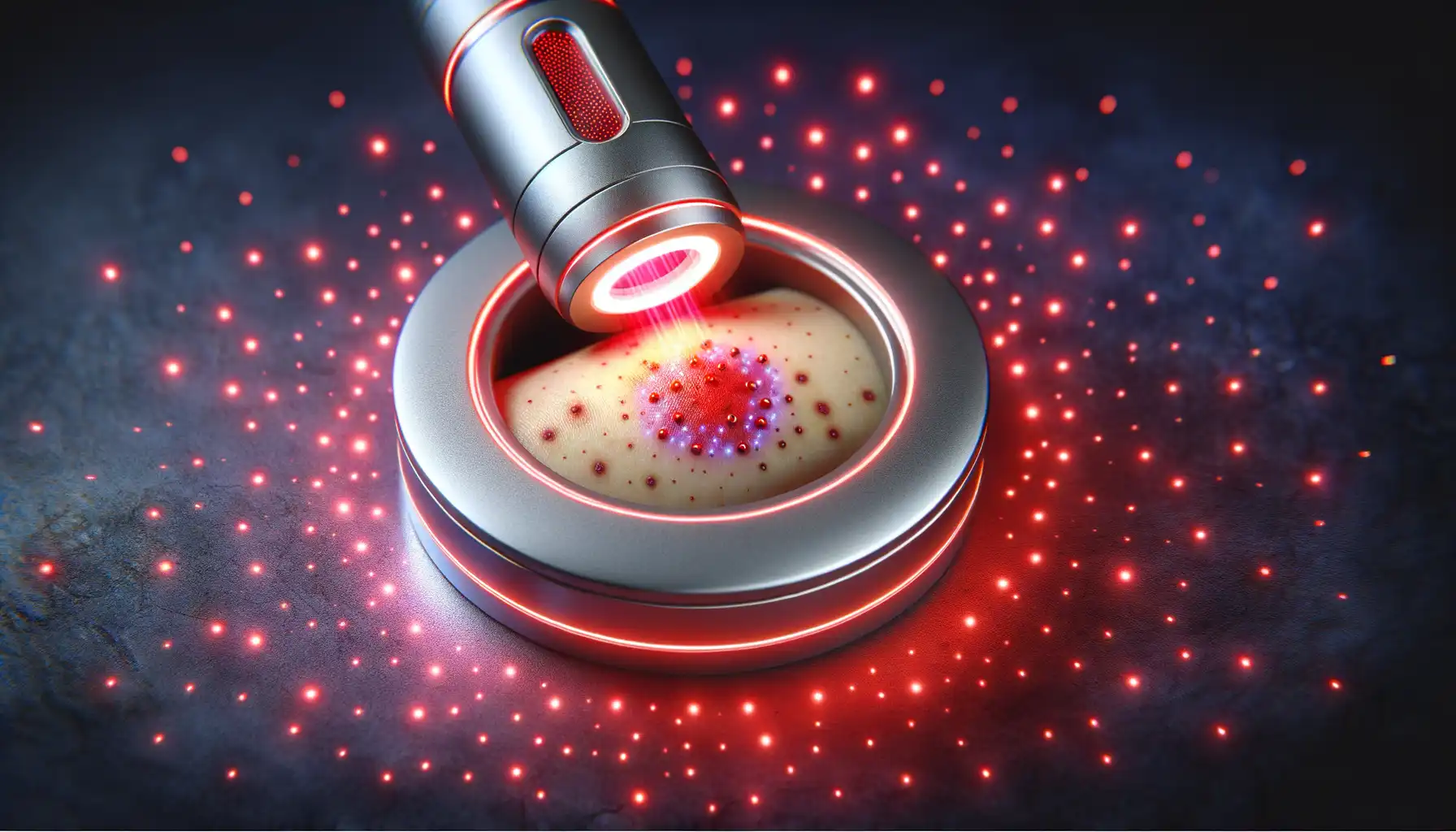Living with herpes, whether it’s HSV-1 (often causing cold sores) or HSV-2 (typically behind genital herpes), can feel like a constant search for ways to manage outbreaks and feel more in control. You’ve probably heard about antiviral medications, but what about other, more holistic approaches? The wellness world is buzzing about infrared saunas, and you might be wondering: can infrared sauna help treat herpes?
Let's dive into that question together. We'll explore what an infrared sauna actually does, what the science says about its effects on the body, and whether it could have a place in your herpes management plan. This is a conversation about symptom relief and immune support—not a cure. It's important to separate fact from fiction so you can make informed decisions about your health.
Understanding Herpes (HSV-1 and HSV-2)
Before we get into saunas, let's do a quick recap of what we're dealing with. Herpes is caused by the herpes simplex virus. It’s incredibly common, with a huge portion of the global population living with it.
HSV-1: This is the type usually associated with oral herpes, or cold sores. It's easily spread through contact like kissing or sharing utensils.
HSV-2: This type is the primary cause of genital herpes and is typically transmitted through sexual contact.
A key thing to remember is that once you have the virus, it stays in your nerve cells for life. It can lie dormant for long periods and then reactivate, causing an outbreak of sores or blisters. These outbreaks are often triggered by things like stress, illness, fatigue, or even sunlight.
The goal of any management strategy is to reduce the frequency and severity of these outbreaks and find relief when they happen. Standard medical treatment involves antiviral medications like acyclovir and valacyclovir, which are highly effective at suppressing the virus.
How Do Infrared Saunas Work?
An infrared sauna isn't like the traditional steam saunas you might picture. Instead of heating the air around you, an infrared sauna uses special lamps to generate far-infrared light. This light penetrates your skin and heats your body directly from the inside out.
Think of it like the difference between sitting in a hot, stuffy room versus feeling the warmth of the sun on your skin. The air temperature in an infrared sauna is much lower (usually 120-150°F) than in a traditional sauna (180-220°F), which many people find more comfortable.
This direct heating process is designed to raise your core body temperature, inducing a deep, therapeutic sweat. This process is at the heart of the proposed health benefits, from detoxification to improved circulation.
Can Infrared Saunas Help Manage Herpes? Exploring the Possibilities
This is the big question. Let’s be perfectly clear upfront: There is no scientific evidence or clinical trial that proves infrared saunas can treat, cure, or prevent herpes outbreaks. infrared saunas are not an antiviral treatment.
However, we can look at the known effects of infrared saunas on the body and explore how they might indirectly help you manage the condition. Think of it as a supportive tool, not a primary treatment.
Stress Reduction and Outbreak Prevention
Stress is one of the most common triggers for a herpes outbreak. When you're stressed, your body releases cortisol, a hormone that can suppress your immune system. A weakened immune system has a harder time keeping the herpes virus in check, giving it a chance to reactivate.
This is where an infrared sauna could potentially play a role. Many people find sauna sessions deeply relaxing. The gentle, penetrating warmth can help:
Soothe sore muscles and joint pain.
Promote a state of calm and mental relaxation.
Improve sleep quality, which is crucial for immune function.
By helping you manage your stress levels, regular sauna use might—theoretically—help reduce the frequency of stress-induced outbreaks.
Immune System Support
A strong, balanced immune system is your best defense against herpes reactivation. While the evidence is still emerging, some research suggests that inducing a mild, controlled fever (a process called hyperthermia) can stimulate the immune system.
When an infrared sauna raises your core body temperature, it mimics a fever. This process may temporarily boost the production of white blood cells, which are essential for fighting off infections. A more robust immune system is better equipped to keep the herpes virus dormant.
Improved Circulation
Infrared saunas are known to improve blood circulation. As your core temperature rises, your heart rate increases and your blood vessels dilate, pumping more oxygen- and nutrient-rich blood throughout your body. Better circulation can help with tissue repair and overall cellular health, which is always a plus for your body's defense systems.
What the Science Says: A Look at the Evidence
While the ideas above are plausible, they are largely theoretical when it comes to herpes. Here's a breakdown of the current scientific landscape:
Direct Evidence on Herpes: None. There are no randomized controlled trials (the gold standard of medical research) specifically studying the effects of infrared saunas on patients with HSV-1 or HSV-2.
Evidence on Immune Function: Some studies suggest that whole-body hyperthermia can have a modulating effect on the immune system. For example, some research points to changes in immune cell counts following heat stress. However, as noted by the World Health Organization, managing herpes focuses on symptom relief and preventing transmission, with antivirals being the proven method.
Evidence on Stress and Pain: There is stronger evidence supporting the use of saunas for relaxation, pain relief, and improving feelings of well-being. For anyone dealing with the chronic stress of a recurring condition, this benefit alone can be significant.
The bottom line is that more research is needed. We can't definitively say that saunas help the immune system fight herpes, but we can say they are a powerful tool for relaxation and stress management.
Safety First: Using an Infrared Sauna Responsibly
If you're considering trying an infrared sauna, safety is paramount. This is especially true when you're managing a health condition.
When to Absolutely Avoid the Sauna
Do not use an infrared sauna if you have an active herpes lesion. The warm, moist environment of a sauna (and the gym or spa where you find it) is a potential place for spreading the virus. It's also important to avoid sharing towels or sitting directly on sauna benches without a clean towel barrier to protect yourself and others. According to the Centers for Disease Control and Prevention (CDC), you should avoid contact with lesions to prevent transmission.
Other Important Contraindications
Consult your doctor before using an infrared sauna if you:
Are pregnant.
Have a fever or are acutely ill.
Have certain cardiovascular conditions (like unstable angina or recent heart attack).
Suffer from conditions that impair your ability to sweat.
Are taking medications that can be affected by heat or cause photosensitivity. You can find more information about drug-induced photosensitivity from sources like the National Institutes of Health (NIH).
Practical Tips for Safe Sauna Use
If you get the green light from your doctor, follow these tips for a safe and beneficial session:
Hydrate, Hydrate, Hydrate: Drink plenty of water before, during, and after your session. You will sweat a lot and need to replenish those fluids.
Start Low and Go Slow: If you're new to saunas, begin with shorter sessions (10-15 minutes) at a lower temperature (around 120°F). You can gradually work your way up to longer sessions (25-30 minutes) as your body adapts.
Listen to Your Body: If you start to feel dizzy, nauseous, or unwell, end your session immediately. Don't push yourself.
Practice Good Hygiene: Always sit on a clean, thick towel. Shower afterward to rinse off the sweat and toxins from your skin.
The Final Verdict
So, can an infrared sauna help treat herpes? The answer is nuanced. It is not a medical treatment, and it will not cure the virus or stop an outbreak in its tracks. For that, you need doctor-prescribed antiviral medications.
However, as a supportive therapy, an infrared sauna may offer indirect benefits. By helping you manage stress, promoting relaxation, and potentially giving your immune system a gentle boost, it could become a valuable part of your holistic wellness routine. These effects might help reduce the frequency of outbreaks triggered by stress and fatigue.
Think of it as one tool in a larger toolbox for managing your health. Your primary tools are the proven medical treatments recommended by your doctor. Complementary practices like sauna use, a healthy diet, regular exercise, and good sleep hygiene all work together to support your body's overall resilience.
Before you make any changes to your care plan or start a new practice like using an infrared sauna, have a conversation with your healthcare professional. They can help you weigh the potential benefits against any personal health risks and ensure you’re making the safest, most effective choices for your body.



